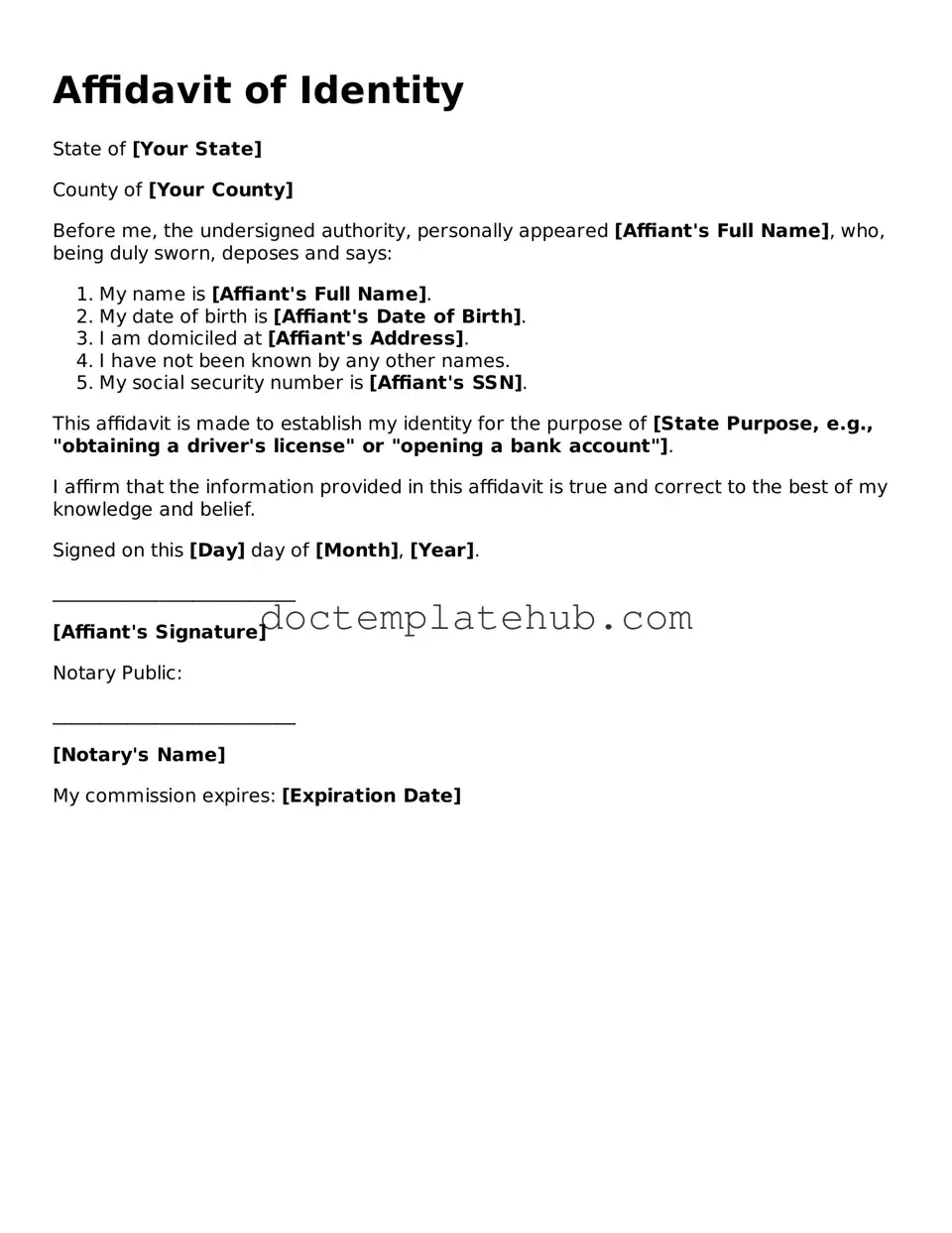The Affidavit of Identity form shares similarities with the Affidavit of Support. Both documents require a sworn statement, typically signed in front of a notary public. An Affidavit of Support is often used in immigration cases to demonstrate that a sponsor has the financial ability to support an applicant. Just like the Affidavit of Identity, it must include personal information and can be used to verify the identity of the sponsor.
Another document similar to the Affidavit of Identity is the Declaration of Identity. This document also serves to confirm a person's identity, often used in legal proceedings. A Declaration of Identity may not require notarization in some cases, but it still must contain specific identifying information. Both documents aim to establish who someone is, making them essential in various legal contexts.
The Affidavit of Identity is also akin to the Certificate of Identity. This certificate is often issued by government agencies to confirm a person's identity. While the Affidavit of Identity is a sworn statement made by an individual, the Certificate of Identity is an official document that may require supporting evidence, such as birth certificates or identification cards, to validate the information provided.
Similar to the Affidavit of Identity, the Identity Theft Affidavit is designed to protect individuals from identity theft. This affidavit is used to report and document instances of identity theft, providing a sworn statement about the unauthorized use of personal information. Both documents require detailed personal information and serve to safeguard one’s identity in legal matters.
The Affidavit of Identity can also be compared to the Proof of Identity document. This document is often required in various transactions, such as banking or legal agreements, to establish that a person is who they claim to be. While a Proof of Identity may not always be a sworn statement, it typically includes similar identifying information, such as name, address, and date of birth.
Another related document is the Identity Verification Affidavit. This affidavit is often used in court cases or transactions where confirming a person’s identity is crucial. It may require the signer to provide personal details and can serve as a legal tool to prevent fraud. Both the Identity Verification Affidavit and the Affidavit of Identity aim to ensure that individuals are accurately identified.
In addition to the various identity verification documents, individuals may also need to submit a Single Status Affidavit to declare their marital status when applying for legal documents. This document serves a similar purpose, ensuring that there are no ambiguities in one's relationship status. For more information on how to obtain a Single Status Affidavit, you can visit Top Forms Online, which provides resources to facilitate the completion of this important form.
Lastly, the Personal Identification Affidavit is similar in purpose to the Affidavit of Identity. This document is often used in situations where a person's identity needs to be verified for legal or financial reasons. It requires a sworn statement and includes personal information to confirm the individual’s identity. Both documents serve to protect individuals and ensure that their identity is clearly established in various legal contexts.
